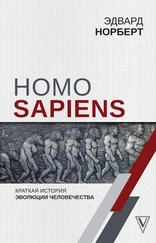Klein R. G. The Human Career. Human Biological and Cultural Origins. Chicago/London: University of Chicago Press, 1989.
Klein R. G. The archaeology of modern human origins // EA. 1992. N 1. P. 5–14.
Klein R. G. Anatomy, behavior, and modern human origins // JWP. 1995. N 9. P. 167–198.
Klein R. G. Southern Africa and modern human origins // Journal of Anthropological Research. 2001. N 57. P. 1–16.
Klein R. G. Out of Africa and the evolution of human behavior // EA. 2008. N 17. P. 267–281.
Koenigswald G. H. R. (ed). Hundert Jahre Neanderthaler. Cologne; Graz: Böhlau-Verlag, 1958.
Koller J., Mania D. High-tech in the Middle Paleolithic: Neanderthal-manufactured pitch identified // EJA. 2001. N 4. P. 385–397.
Krantz G. S. A reappraisal of neandertal taxonomy // J. L. Franzen (ed). 100 Years of Pithecanthropus. The Homo Erectus Problem. Frankfurt: E. Schweizerbart, 1994. P. 327–331.
Krause J., Lalueza-Fox C., Orlando L., Enard W., Green R. et al. The derived FOXP2 variant of modern humans was shared with Neandertals // CB. 2007a. N 17. P. 1–5.
Krause M., Orlando L., Serre D., Viola B. et al. Neanderthals in central Asia and Siberia // Nature. 2007b. N 449. P. 902–904.
Kuhn S. L., Stiner M. C. What’s a mother to do? The division of labor among Neandertals and modern humans in Eurasia // CAn. 2006. N 47. P. 953–980.
Lahr M. M., Foley R. A. Towards a theory of modern human origins: geography, demography, and diversity in recent human evolution // YPA. 1998. N 41. P. 137–176.
Laitman J. T., Heimbuch R. C., Crelin E. S. Developmental change in a basicranial line and its relationship to the upper respiratory system in living primates // AJA. 1978. N 152. P. 467–482.
Lalueza-Fox C. Mitochondrial DNA of an Iberian Neandertal suggests a population affinity with other European Neandertals // CB. 2006. N 16. P. 629–630.
Lalueza-Fox C., Römpler H., Caramelli D., Stäubert C., Catalano G., Hughes D., Rohland N., Pilli E., Longo L., Condemi S., de la Rasilla M., Fortea J., Rosas A., Stoneking M., Schöneberg T., Bertranpetit J., Hofreiter M. A melanocortin 1 receptor allele suggests varying pigmentation among Neanderthals // Science. 2007. N 318. P. 1453–1455.
Layton R., Barton R. Warfare and human social evolution // K. J. Fewster, M. Zvelebil (eds). Ethnoarchaeology of Hunter-Gatherers: Pictures at an Exhibition. Oxford: Archaeopress, 2001. P. 13–24.
Lebel S., Trinkaus E., Faure M., Fernandez P., Guérin C., Richter D., Mercier N., Valladas H., Wagner G. A. Comparative morphology and paleobiology of Middle Pleistocene human remains from the Bau de l’Aubesier, Vaucluse, France // PNAS. 2001. N 98. P. 11097–11102.
Lee S.-H., Wolpoff M. The pattern of evolution in Pleistocene human brain size // Paleobiology. 2003. N 29. P. 186–196.
Leonard W. R., Snodgrass J. J., Sorensen M. V. Metabolic adaptation in indigenous Siberian populations // ARA. 2005. N 34. P. 451–471.
Lev E., Kislev M. E., Bar-Yosef O. Mousterian vegetal food in Kebara Cave, Mt. Carmel // JAS. 2005. N 32. P. 475–484.
Lewin R. Human Evolution: An Illustrated Introduction. 5 thed. Malden; Oxford; Carlton: Blackwell, 2005.
Lewin R., Foley R. A. Principles of Human Evolution. 2 nded. Malden; Oxford; Carlton: Blackwell, 2004.
Lieberman P. Current views on Neanderthal speech capabilities: A reply to Boë et al. // JP. 2007a. N 35. P. 552–563.
Lieberman P. Human speech: anatomical and neural bases // Can. 2007b. N 48. P. 39–66.
Lieberman P., Crelin E. S. On the speech of Neandertal man // LI. 1971. N 2. P. 203–222.
Liu H., Prugnolle F., Manica A., Balloux F. A geographically explicit genetic model of worldwide human-settlement history // AJHG. 2006. N 79. P. 230–237.
Lukács B. The lapedo child, the szeleta men, and the convergence to leading cultures // http://www.rmki.kfki.hu/~lukacs/lapedo.html. 2001.
Macaulay V., Hill C., Achilli A., Rengo C., Clarke D., Meehan W., Blackburn J., Semino O., Scozzari R., Cruciani F., Taha A., Shaari N. K., Raja J. M., Ismail P., Zainuddin Z., Goodwin W., Bulbeck D., Bandelt H.-J., Oppenheimer S., Torroni A., Richards M. Single, rapid coastal settlement of Asia revealed by analysis of complete mitochondrial genomes // Science. 2005. N 308. P. 1034–1036.
Macchiarelli R., Bondioli L., Debéhath A., Mazurier A., Tournepiche J.-F., Birch W., Dean C. How Neandertal molar teeth grew // Nature. 2006. N 444. P. 748–751.
Macdougall D. Frozen Earth. The Once and Future Story of Ice Ages. University of California Press, 2004.
MacLarnon A. M., Hewitt G. P. The evolution of human speach: the role of enhanced breathing control // AJPA. 1999. N 109. P. 341–363.
MacLarnon A. M., Hewitt G. P. Increased breathing control: another factor in the evolution of human language // EA. 2004. N 13. P. 181–197.
Madella M., Jones M. K., Goldberg P., Goren Y., Hovers E. The exploitation of plant resources in Amud Cave (Israel): the evidence from phytolith studies // JAS. 2002. N 29. P. 703–719.
Maher M. K. Neandertal mandibular traits in modern Homo sapiens // AJPA. 2005. N 40. P. 142–143.
Mann A., Trinkaus E. Neandertal and Neandertal-like fossils from the Upper Pleistocene // YPA. 1973. N 17. P. 169–193.
Marean C., Kim S. Mousterian large-mammal remains from Kobeh cave // CAn. 1998. N 39 (Supplement). P. 79–113.
Marquet J., Lorblanchet M. A Neanderthal face? The proto-figurine from La Roche-Cotard, Langeais (Indre-et-Loire, France) // Antiquity. 2003. N 77. P. 661–70.
Marshack A. The Neanderthals and the human capacity for symbolic thought: cognitive and problemsolving aspects of Mousterian symbol // O. Bar-Yosef (ed). L’Homme de Néandertal, vol. 5, Liège: ERAUL, 1988. P. 57–91.
Martelli S. A., Steele J. The reconstruction of Neanderthal hyoid position — a new approach using three-dimensional geometric morphometries // AJPA. 2010. N 141 (Supplement 50). P. 165.
Martínez I., Rosa M., J.-L. Arsuaga et al. Auditory capacities in Middle Pleistocene humans from the Sierra de Atapuerca in Spain // PNAS. 2004. N 101. 9976–9981.
Martínez I., Arsuaga J. L., Quam R., Carretero J. M., Gràcia A., Rodriguez L. Human hyoid bones from the Middle Pleistocene site of Sima de los Huesos (Sierra de Atapuerca, Spain) // JHE. 2008. N 54. P. 118–124.
Martínez I., Quam R., Arsuaga J. L., Lorenzo C., Gràcia A., Carretero J. M., Rosa M., Jarabo P. Approche paléontologique de l’évolution du langage: un état des lieux // L’Anthropologie. 2009. N 113. P. 255–264.
Maslin M. Quaternary climate transitions and cycles // V. Gornitz (ed). Encyclopedia of Paleoclimatology and Ancient Environments. Dordrecht: Springer, 2009. P. 841–855.
Mazza P. P. A., Martini F., Sala B., Magi M., Colombini M. P., Giachi G., Landucci F., Lemorini C., Modugno F., Ribechini E. A new Palaeolithic discovery: tarhafted stone tools in a European Mid-Pleistocene bone-bearing bed // JAS. 2006. N 33. P. 1310–1318.
McBrearty S., Brooks A. S. The revolution that wasn’t: a new interpretation of the origin of modern human behavior // JHE. 2000. N 39. P. 453–563.
McDaniel M. A. Big-brained people are smarter: A meta-analysis of the relationship between in vivo brain volume and intelligence // Intelligence. 2005. N 33. P. 337–346.
McDougall I., Brown F. H., Fleagle J. G. Sapropels and the age of hominins Omo I and II, Kibish, Ethiopia // JHE. 2008. N 55. P. 409–420.
Читать дальше








